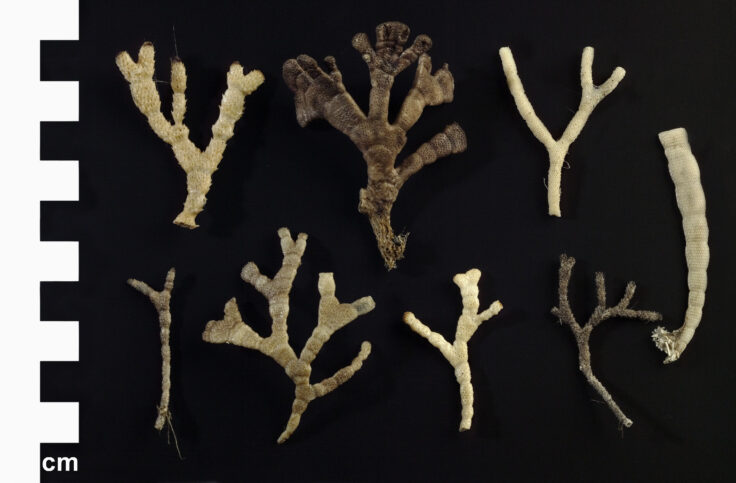Antarctic sea bed life captures carbon as sea ice melts
Colonies of tiny filter-feeding Antarctic marine creatures (bryozoans), that appear to be thriving in response to a reduction in sea-ice cover, are playing an important role in carbon draw-down according to new research published this week (Monday 21 September) in the Cell Press journal Current Biology.
A British Antarctic Survey (BAS) investigation into biological change on sea beds of six continental shelf areas around Antarctica analysed bryozoan skeletons that were collected during ship-borne research cruises. Data from over 20 years included photographic studies that helped calculate how abundant they are. The most recent research cruises on board the RRS James Clark Ross used a custom built high-resolution camera lander.

Less sea-ice stimulates more growth in the algae that feeds the bryozoans, providing longer meal times. The data reveal that the annual production of carbon in the bodies of these bryozoans has increased due to a combination of the animals growing more, living for longer and being more abundant. According to author Dr David Barnes from BAS these animals now take up 75,000 tonnes of carbon more than 20 years ago.
Dr Barnes said:
“The results from this study are an important step towards improving understanding of the impact of environmental change in Antarctica. It is well-known that the Southern Ocean is an important ‘sink’ for atmospheric carbon dioxide, but it was not realised that the seabed played such an important and increasing part. These changes to marine life in Antarctica’s continental shelf areas – where the water is hundreds of metres deep – may help evaluate life’s role in carbon draw-down. If this increased carbon capture applies to other sea-bed life then millions of tonnes of carbon from the atmosphere may be being transported to polar sea beds. This is equivalent to tens of thousands of hectares of tropical rainforest.”
An unexpected find was that the South Orkney Islands—the world’s first High Seas Marine Protected Area (MPA)— was identified as a place where the bryozoans were thriving most. A new international, BAS-led scientific cruise to the South Orkney Islands MPA in early 2016, should give researchers a close up look at why that particular location is so important.
Barnes concludes: “The rain forests on land you can see are important with respect to the carbon cycle and climate change, but two-thirds of our planet is ocean, and below it the life you can’t see is also very important in climate responses.”
This research was funded by the Natural Environment Research Council (NERC), the Darwin Initiative (DEFRA) and the Pew Charitable Trusts.
